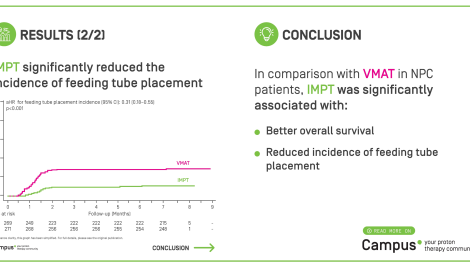Subtitle
A Quantitative Clinical Decision-support Strategy Identifying Which Oropharyngeal Head and Neck Cancer Patients may Benefit the Most from Proton Radiation Therapy.
Published in the Red Journal, this study detailed the model base approach for identifying patients for proton treatment. NTCP models for dysphagia, esophagitis, hypothyroidism, xerostomia and oral mucositis were used to estimate NTCP for 33 oropharyngeal HNC patients previously treated with photon IMRT, then comparative proton therapy plans were generated.
This study found that based on the institutional delivered photon IMRT doses, and the achievable proton therapy doses, the average QALY reduction from all HNC RT complications for photon and proton therapy was 1.52 QALYs vs. 1.15 QALYs, with proton therapy sparing 0.37 QALYs on average. The QALYs spared with proton RT varied considerably between patients, from 0.06 to 0.84 QALYs. Younger patients with p16-positive tumors who smoked ≤10 pack-years may benefit most from proton therapy.



